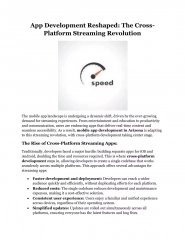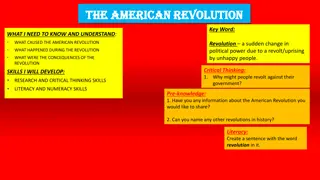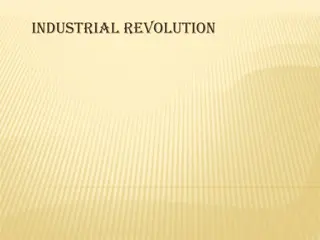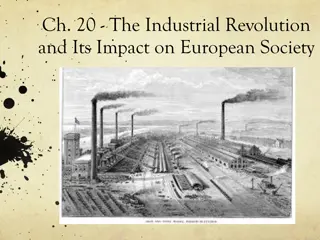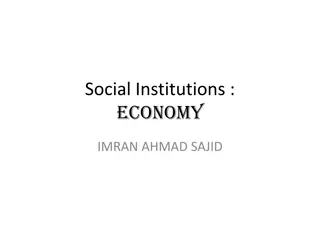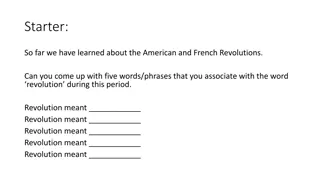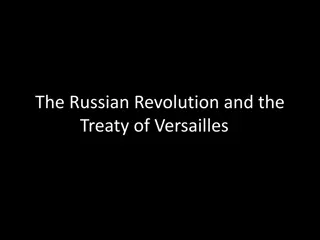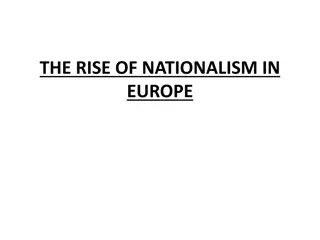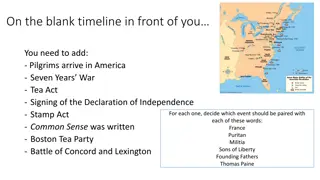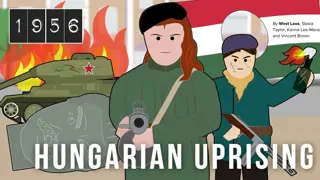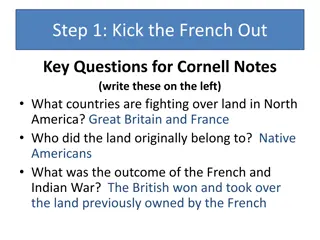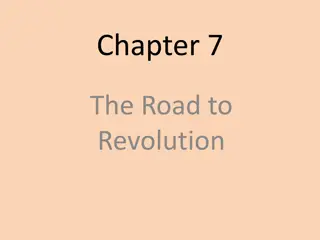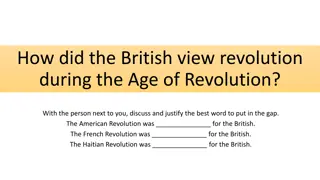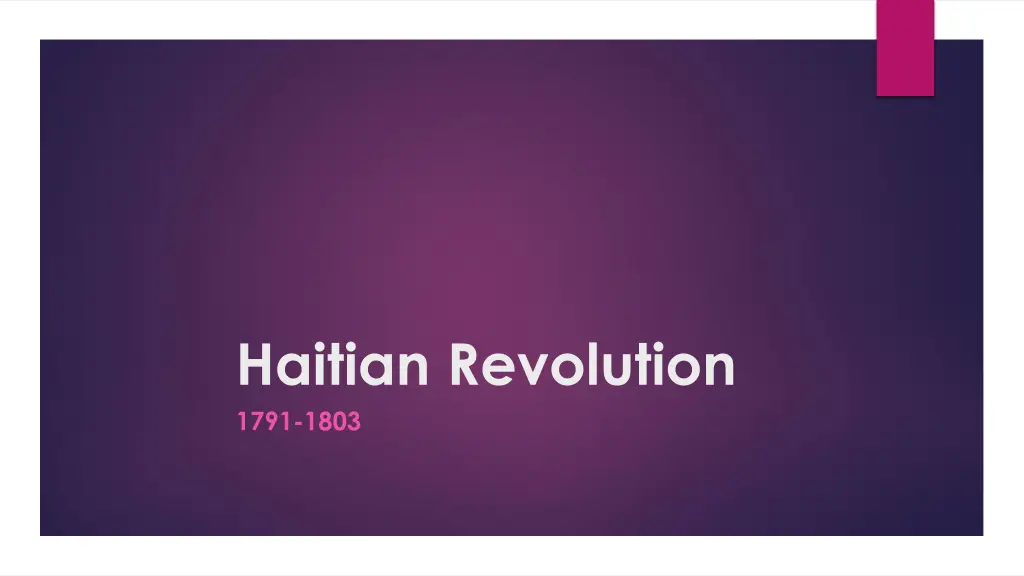
Haitian Revolution 1791-1803: Causes, Impact & Leaders
Explore the Haitian Revolution from 1791-1803, a landmark event in history marked by slave revolts, racial breakdown, and the quest for freedom. Discover the conditions of slavery in Haiti, the cultural significance of Voodoo, key figures like Boukman Dutty, and the pivotal moments that defined this uprising against oppressive colonial rule.
Download Presentation

Please find below an Image/Link to download the presentation.
The content on the website is provided AS IS for your information and personal use only. It may not be sold, licensed, or shared on other websites without obtaining consent from the author. If you encounter any issues during the download, it is possible that the publisher has removed the file from their server.
You are allowed to download the files provided on this website for personal or commercial use, subject to the condition that they are used lawfully. All files are the property of their respective owners.
The content on the website is provided AS IS for your information and personal use only. It may not be sold, licensed, or shared on other websites without obtaining consent from the author.
E N D
Presentation Transcript
Haitian Revolution 1791-1803
Saint Domingues Racial Breakdown in the 18thCentury 20,000-40,000 whites 3.5-7% 30,000 free people of color 5% 15,000 mulattos 2.5% 500,000 slaves 88%
Haiti before 1791 France controlled the western part of the Island. By the end of the 18thcentury, 500,000 people were enslaved by the French. Most were of western African descent. The Saint Domingue colony was the most lucrative colony in the world. French plantation owners were watching the events of the French Revolution.
Haitian Slavery The conditions on the island were the worst in the world. The death rate of slaves was around 50%. Most died of overwork in the sugar, coffee, and indigo plantations. It was common to torture slaves who resisted. Most slaves had memories of freedom in Africa.
Why did the Slaves Revolt? Slaves outnumbered whites 10-1. This allowed them to keep their African customs. Voodoo (Vodon) was widely practiced among the slaves. This religion gave the slaves a form of cultural expression and a rallying point for protest against their oppressors.
Boukman Duttys prayer [I am Boukman Dutty, former slave and voodoo priest.] God who made the sun that shines on us from above, who makes the sea to rage and the thunder roll, this same great God from his hiding place on a cloud, hear me, all of you, is looking down upon us. He sees what the whites are doing. The God of the whites asks for crime; ours desires only blessings. But this God who is good directs you to vengeance! He will direct our arms, he will help us. Cast aside the image of the God of the whites who thirsts for our tears and pay heed to the voice of liberty speaking in our hearts .
How did the Revolt begin? The upper, middle, and Mulatto classes were at odds with each other. Black slaves rebelled against their owners in 1791, taking advantage of large difference in population. They killed whites and destroyed their plantations. Boukman, a Voodoo priest led over 100,000 slaves against the French.
Toussaint Louverture He was a former slave who wanted to ensure the revolution took hold. He was a 50 year old carriage driver. He did not participate in the original uprising, but eventually began organizing slaves into military units. He organized the military to fight against the French, Spanish, and English. All three countries wanted to control the island and ensure that the slave revolt failed.
The defeat of the French, Spanish, & English They joined forces with the Spanish army to fight against the French. L ouverture rose to high rank within the Spanish Army. When France abolished slavery, he switched sides. L ouverture was promoted to General in the French Army. He ruled the colony as the French Governor-General. He then forced the British troops to withdraw. His army then defeated a group of mulattos in the south in a race war.
What happened to Louverture? He liberated the entire island from slavery. He still demanded the production of sugar and coffee in order to rebuild the Haitian economy. Napoleon wanted to return to Saint Domingue to reinstate French control and slavery. He then sent a French force to recapture the island. L ouverture was then captured and imprisoned in France.
How did Haiti gain its Independence? Jean-Jacques Dessalines led a revolt following L ouverture s capture. A horrific war broke out, and both sides resorted to mass murder. Haitians killed all Europeans and the French killed all blacks. France was unable to re-supply their troops, and they also suffered a fever within their camps. Haiti would win the war in November 1803.


